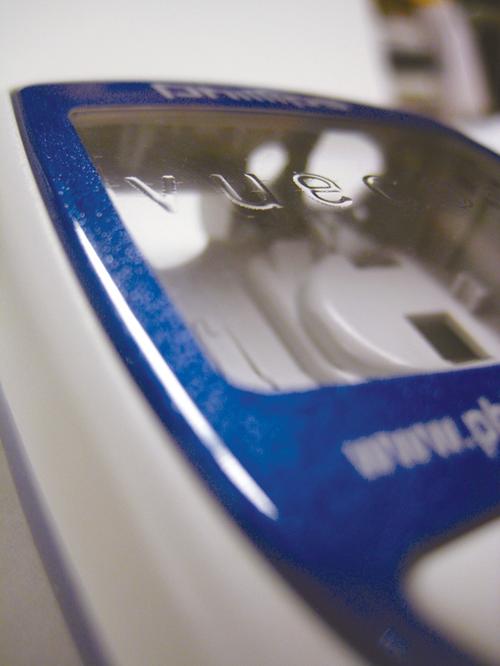Selective Abrasion Coating Saves Steps in Manufacturing Process
August 31, 2011

Abrasion coatings are an essential step in the process of manufacturing many components. Surface abrasion coatings provide window and high-gloss applications to increase scratch resistance, as well as cleanability and chemical resistance to surfaces. In addition, abrasion coatings provide lubricious wear surfaces between parts.
A wide variety of abrasion-coating processes are available. Spray coating, for example, is ideal for single-sided abrasion-coating applications on flat parts. The process requires time-consuming steps of mask tooling, creation, application, and removal to apply to selective areas of components. Another abrasion-coating process, known as spin coating, is ideal for applying non-selective abrasion coating on single-sided parts. A third common abrasion-coating process, dip coating, is ideal for all-sided, complete abrasion-coating coverage.
In response to customer engineering requirements, Phillips developed an alternative to these abrasion-coating processes, known as Vuecoat. The process is ideal for the precise application of abrasion coating on selective areas of components.

How Vuecoat works
Vuecoat uses ink-jet technology and proprietary coating chemistry to apply high-gloss finishes with excellent scratch resistance to polycarbonate, substrate components, such as clear windows. Unlike other abrasion-coating processes, Vuecoat gives manufacturers precise control over location, thickness, and shape of abrasion coating.
Because of its selective application properties, the process can eliminate the need to create, assemble, and seal separate components. The process can also increase the surface hardness in desired areas, while allowing for the elimination of masking on injection-molded parts.
With the many steps involving masking eliminated, including mask tooling, creation, application, and removal, manufacturers significantly reduce exposure to foreign mask particles that could cause parts to be rejected. In addition, there is no need to eject or peel away masks -- a process that could compromise part-edge quality.

Rapid Vuecoat process
Performed in an enclosed Class 100,000 cleanroom environment, the Vuecoat process involves typical coating steps, but with much-reduced floor space and process time. Parts being coated first are loaded into custom nests and indexed to the cleaning station. Once the surface has been cleaned of any residual dust or contamination, the parts move to a surface-activation station. Once activated via a plasma-like process, the parts are brought under the head of the coating dispenser, coated, then moved into the ultraviolet curing station. Once cured, the part is removed from the load station for packaging. No masking is required in the Vuecoat process, which eliminates flaking, as well as incidences of carried contaminants on components.
About the Author(s)
You May Also Like





